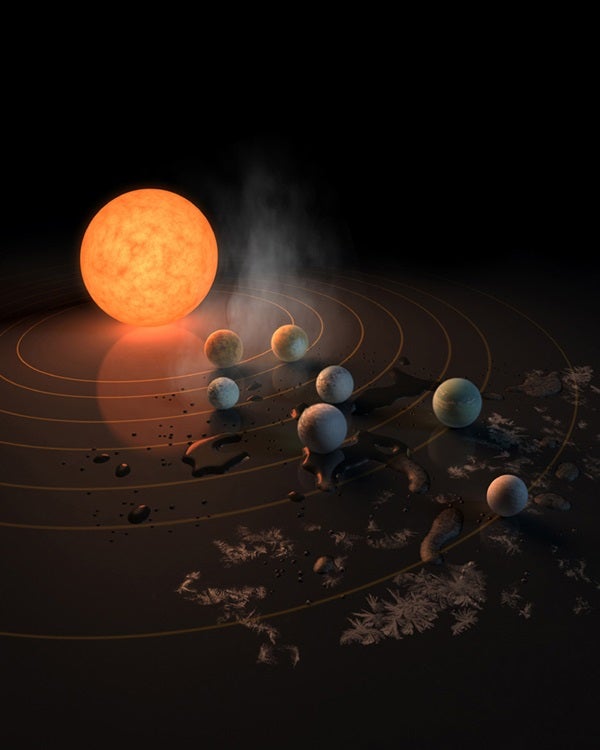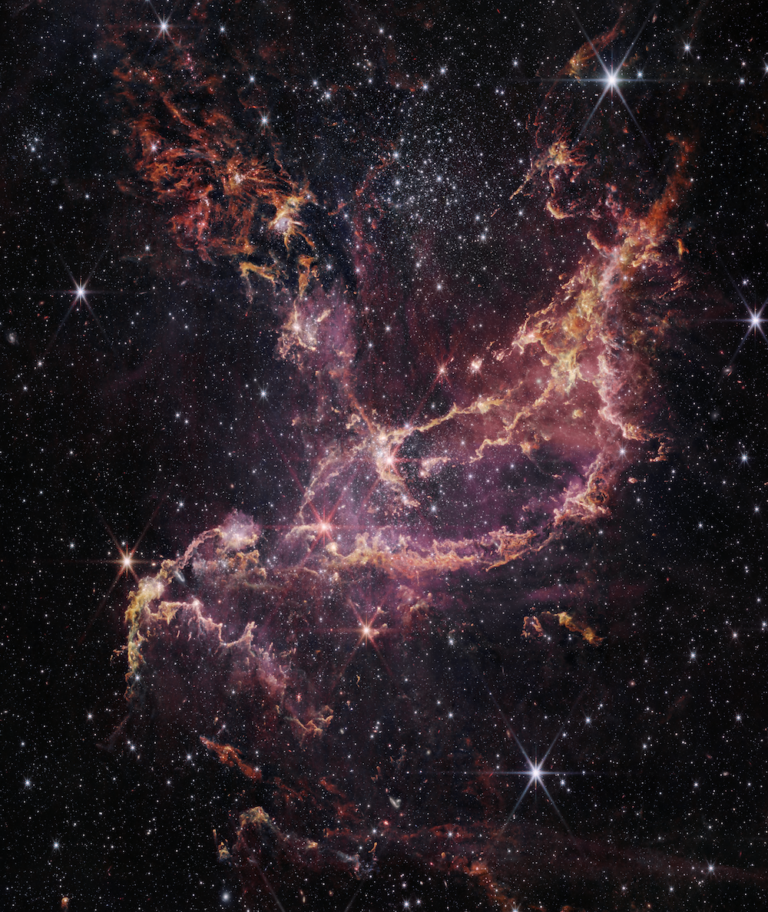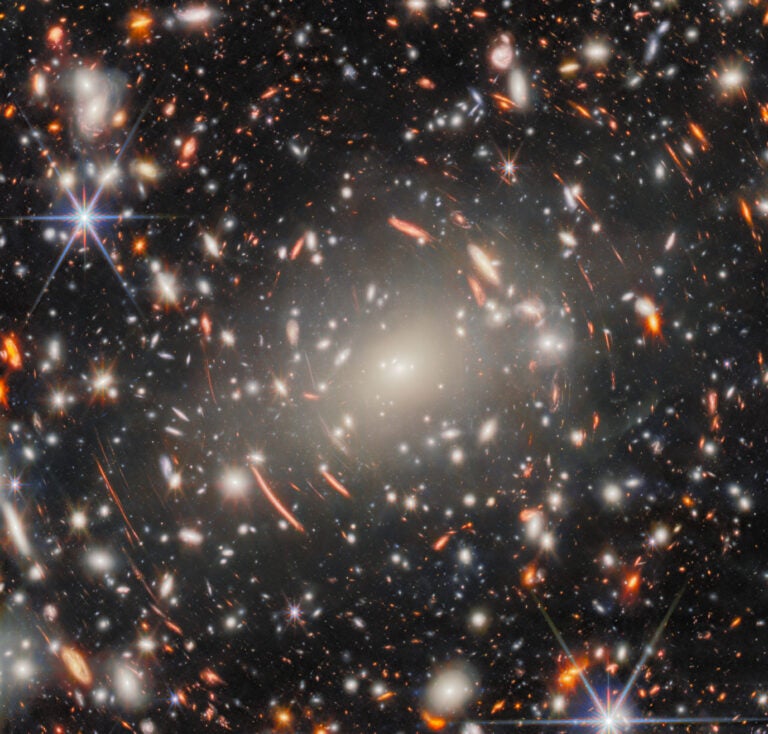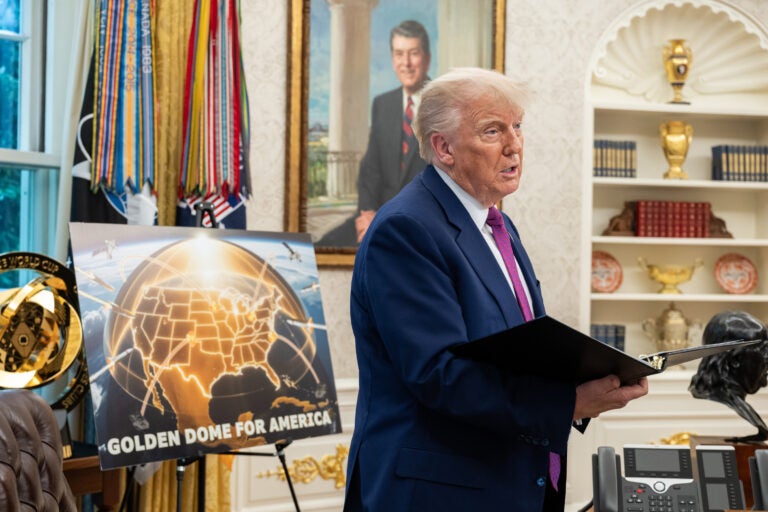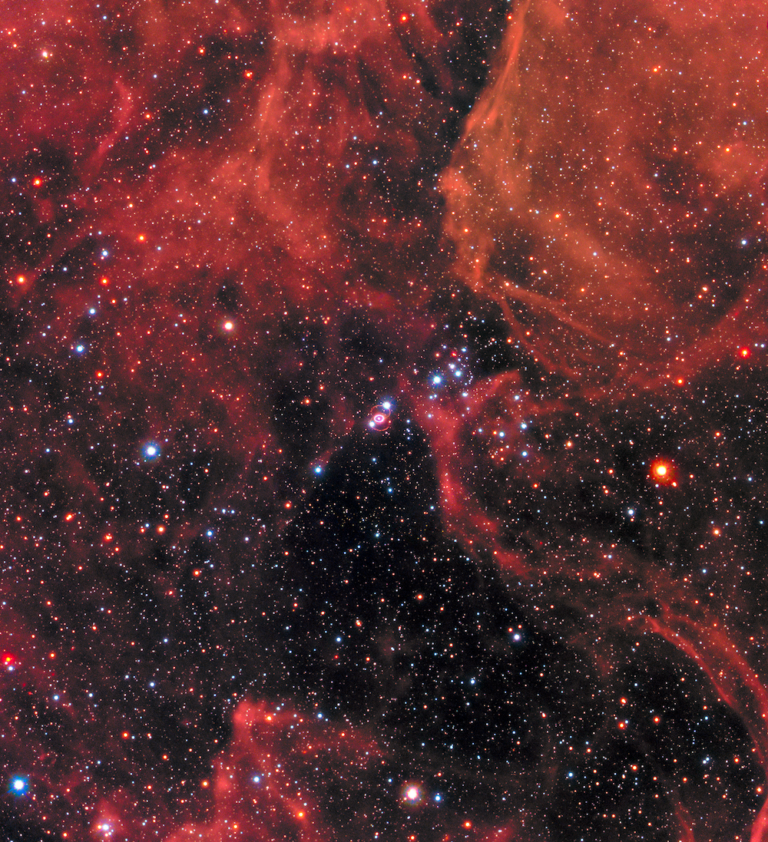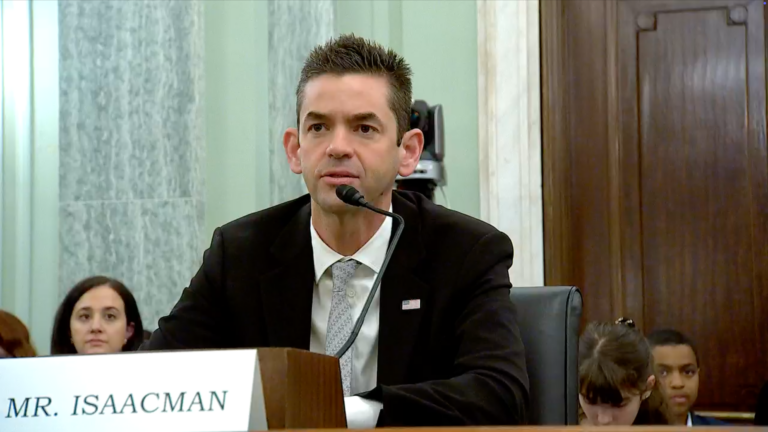The TRAPPIST-1 planetary system could be one of the most promising places to find life … if its star isn’t too volatile. A new paper published in the Proceedings of the National Academy of Sciences suggests that if the system is habitable, it might be REALLY habitable and more or less share the same life.
The TRAPPIST-1 system was initially announced in May 2016 as a three-planet system around a star slightly larger than Jupiter. At the time, two planets were believed to be habitable. Further study revealed that the third, erratic planet was actually several planets, and that the total number of planets (so far at least) was seven.
The planets are tightly packed, with distances similar to the separation of the Earth and the Moon between them. Each sits in resonant orbits to each other. But these close distances could have a strange effect — it wouldn’t be hard for meteors to hop from one planet to another, bringing microbial life along with them. If this is the case, the life on each planet could have followed similar trajectories. We now know at least three planets in the system are habitable (though all seven could be, under the right conditions.)
The likely “passengers” would be microbial. The paper by Manasvi Lingam and Abraham Loeb suggests that their hypothesis could be put to the test by finding the same biosignatures on each planet affected, something that might be possible by comparing the similarity of atmospheres with the upcoming James Webb Space Telescope. It also suggests that similar planetary systems could be subject to this same dynamic, which could even be applied to exomoons or planets around failed stars called brown dwarfs.
The TRAPPIST-1 star does throw one wrench in the works: like many small M-dwarf stars, it is fairly active, shooting flares out that could strip habitable planets of their atmospheres. But a recently discovered planet around an M-dwarf appears to have retained its atmosphere, meaning it is possible that, against all odds, these planets could cling on for dear life to their gas layers.
So with that writing prompt, go out and write your sci-fi novel about warring planets that only need a Saturn V equivalent to go between worlds — or use giant space cannons to wage a war of the worlds.
The TRAPPIST-1 system was initially announced in May 2016 as a three-planet system around a star slightly larger than Jupiter. At the time, two planets were believed to be habitable. Further study revealed that the third, erratic planet was actually several planets, and that the total number of planets (so far at least) was seven.
The planets are tightly packed, with distances similar to the separation of the Earth and the Moon between them. Each sits in resonant orbits to each other. But these close distances could have a strange effect — it wouldn’t be hard for meteors to hop from one planet to another, bringing microbial life along with them. If this is the case, the life on each planet could have followed similar trajectories. We now know at least three planets in the system are habitable (though all seven could be, under the right conditions.)
The likely “passengers” would be microbial. The paper by Manasvi Lingam and Abraham Loeb suggests that their hypothesis could be put to the test by finding the same biosignatures on each planet affected, something that might be possible by comparing the similarity of atmospheres with the upcoming James Webb Space Telescope. It also suggests that similar planetary systems could be subject to this same dynamic, which could even be applied to exomoons or planets around failed stars called brown dwarfs.
The TRAPPIST-1 star does throw one wrench in the works: like many small M-dwarf stars, it is fairly active, shooting flares out that could strip habitable planets of their atmospheres. But a recently discovered planet around an M-dwarf appears to have retained its atmosphere, meaning it is possible that, against all odds, these planets could cling on for dear life to their gas layers.
So with that writing prompt, go out and write your sci-fi novel about warring planets that only need a Saturn V equivalent to go between worlds — or use giant space cannons to wage a war of the worlds.

